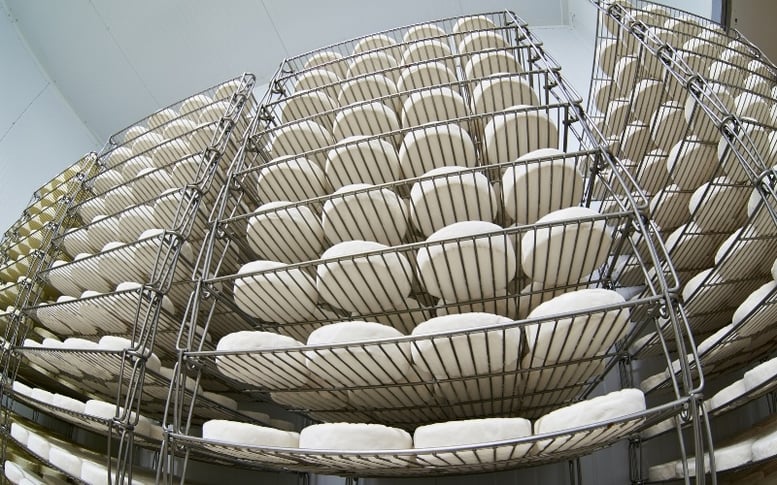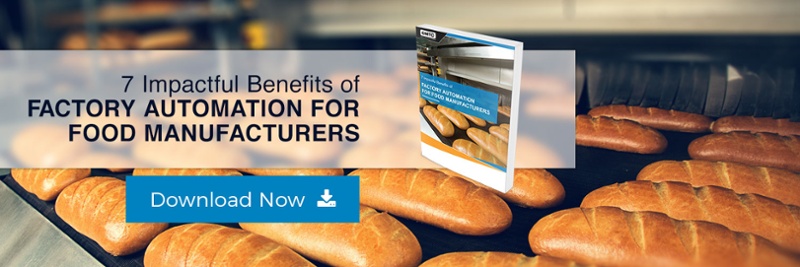June 15, 2017 | Food and Beverage
How to Improve Product Quality and Consistency in Food Manufacturing

The best managers are always seeking cost-saving opportunities within their manufacturing operations. Of all of those opportunities, there is no better cost to mitigate than that of poor quality. Lost labor hours and scrapping valuable food materials contributes zero value to your goals.
Therefore, to eliminate waste and improve quality, you must maintain a strategic approach which incorporates the following list to help improve product quality in food manufacturing.
Create an Organizational Understanding of the Quality Cost
After a defect reaches a consumer, the cost is dramatically higher than fixing it at the source of the problem. Therefore, it is critical for all staff in the manufacturing environment to be trained to understand that the cost of poor quality multiplies exponentially if it enters the field.
Once staff understands this perspective, the desire to improve product quality in food manufacturing and drill down to the root cause of a problem will be more common.
Implementing Automated Statistical Process Control Systems
According to Food Quality and Safety Magazine, Statistical Process Control (SPC) was created 65-years ago as a method of quality control improvement in a manufacturing environment. This concept consisted of the weighing of products and raw materials to produce statistical tools including histograms, scatter diagrams, frequency distribution and Pareto charts to reduce variations in the process. This led to a reduction in defects and overall waste within the production line. Unfortunately, there is still the aspect of human error which can sometimes produce inconsistent results.
Luckily, modern technology has yielded automated SPC systems that remove the manual aspect from the recording process; which decreases the human error associated with recording incorrect weighing results. The system is comprised of a scale system with integrated automated SPC software that can be configured to the required tolerances. By implementing such a system, you may improve product quality in food manufacturing with consistent results and traceability of every measured batch.
Maintain a High Level of Supply Chain Visibility
Throughout the supply chain, the majority of employees are limited to their own requirements. It is common in the manufacturing environment to only have visibility to a few levels. Therefore, by creating a high level of transparency during the manufacturing process, you can significantly impact quality.
For example, tracking and displaying Key Performance Indicators (KPI's) around the facility can give insight to all employees as to how the company is performing from a quality standpoint. This will motivate the line workers to be more vigilant to help improve product quality in food manufacturing.
Perform Regular Analyses
Safety and quality assessments are essential to improve product quality in food manufacturing. You and your suppliers must have a clear understanding of food safety requirements. Although larger retailers have more resources for establishing a formalized auditing process, small and medium-sized companies should still implement an auditing system and maintain strict food safety practices that are performed and enforced.
Strive for Improved Sustainability
A paper written by students at the University of Wisconsin developed a study whereby a survey was mailed to 1,000 random consumers in five coastal California counties asking questions about their viewpoint on food sources. 59 percent responded that they wanted to know more about food safety, animal treatment, working conditions, wages, distance traveled, nutritional content and environmental impact. The study determined that a majority of consumers are willing to spend more money to know that sustainability efforts have been used in the distribution and manufacture of their food.
For instance, Kroger is the largest natural food brand in the United States—with additional plans to expand in the organic food market. The company has worked closely with suppliers, farmers and manufacturers to convert manufacturing to sustainable practices.
The good news is that sustainable practices also benefit your bottom line by lessening waste and non-value added manufacturing activities; which helps to improve product quality in food manufacturing.
Utilize Accurate Labeling
The responsibility for accurate labeling falls on all individuals within the supply chain; from shift managers to the government. A study conducted by Trace One found that consumers have a different view of who is responsible for food safety.
While manufacturers and retailers feel that the role of government regulations are not supportive of the industry, consumers have a different viewpoint. The "to GMO or to not GMO?" debate has been at the forefront of farming and labeling practices in the food industry. Many consumers argue that while GMOs do not pose a grave impact on human safety, they do consider it to impact their overall health and would prefer to know that they're consuming them from the labeling itself. Therefore, the accurate labeling of ingredients, raw materials, country of origin, nutritional information and allergens is essential to improve product quality in food manufacturing.
Maintaining a high level of quality requires adherence to the process, auditing, and vigilance. The more an entire manufacturing plant is on board with promoting quality and awareness, the better the quality will be. All levels of consistency, from raw ingredients to the quality auditing of finished goods, are required. From a management perspective, by following the six aforementioned opportunities, you can work with your team to improve product quality in manufacturing.

